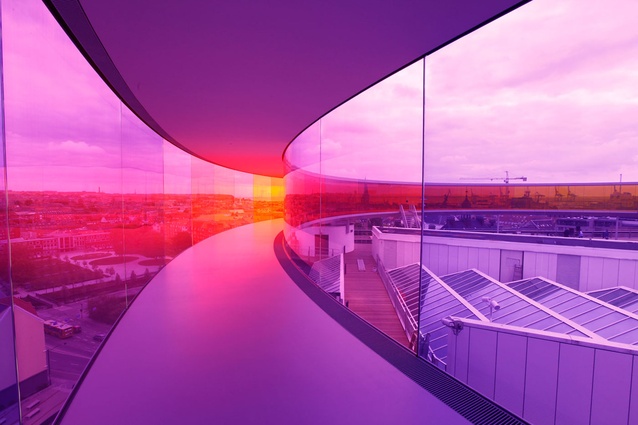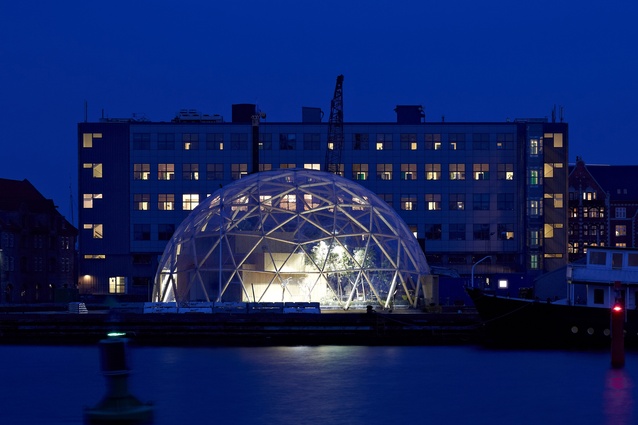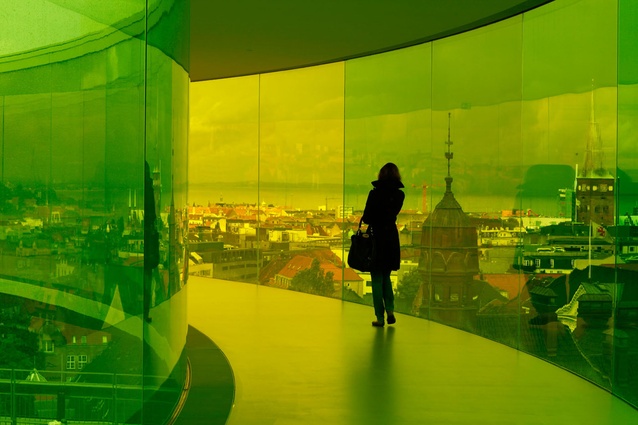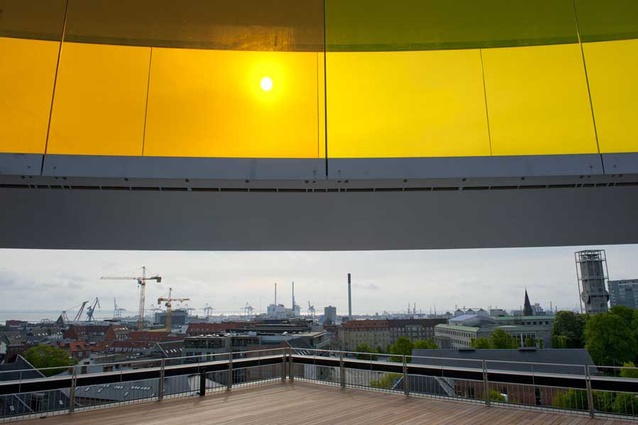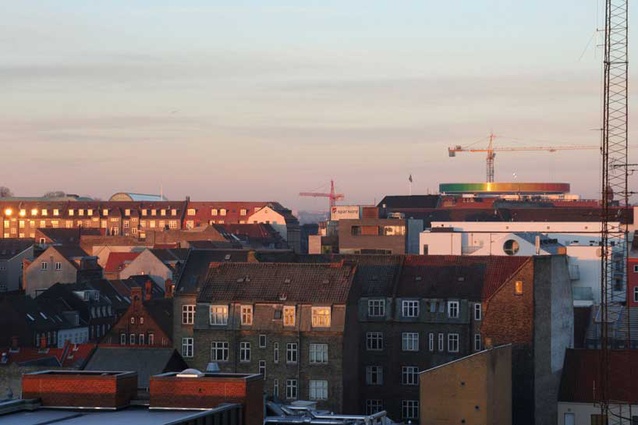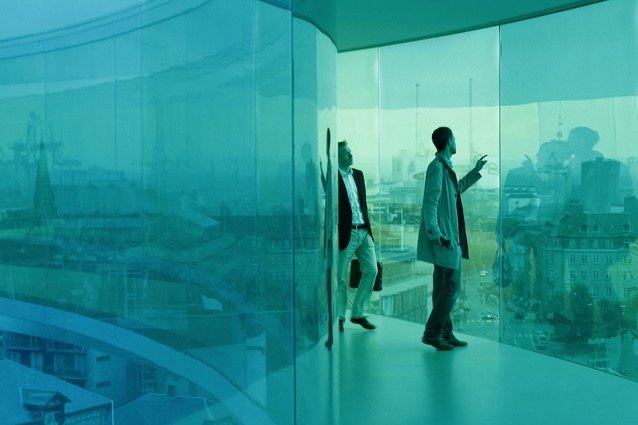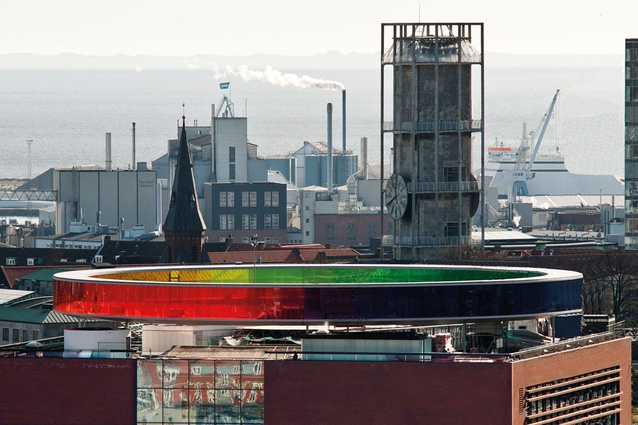The Danish diameter
They do things a little differently in Denmark. As with the rest of Scandinavia, taxes are high and the social fabric of the country is strong – Denmark consistently ranks highly among the glut of global indicators from GDP to quality of life. As a sort of window into society, Danish design reflects the country’s focus on quality, functionality and sustainability. It is an approach coupled with a generosity of spirit and which suffuses design from furniture to public space.
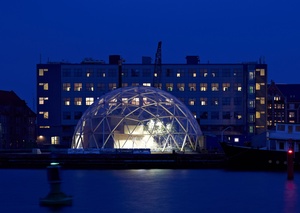
Two recent projects show the public side of this ethos (albeit with very different results): Your Rainbow Panorama in Århus and Dome of Visions in Copenhagen.
Olafur Eliasson’s Your Rainbow Panorama creates a public spectacle with a reach far wider than its rooftop site above the ARoS Museum. Kristoffer Tejlgaard and Benny Jepsen’s Dome of Visions also plays with our expectations, resembling Buckminster Fuller dome in more ways than meet the eye.
Based in the Danish capital, Tejlgaard and Jepsen describe themselves as “outlaw architects” and, even though Jepsen does sport a rebellious beard, the term refers to a growing movement of designer-led (rather than client-led) projects.
While proposing a temporary meeting space to the Danish Public Housing Association, they came up with a deconstructed dome made with salvaged timber. Danish building giant NCC was impressed and asked the firm to devise something similar in which to hold events and generate interest in empty sites the company wished to develop. Tejlgaard was clear, however, that they did not want to repeat themselves. “We didn’t want to give them the same pavilion, but rather create a project that had more on its mind than [a desire for] showing off”.
The Danish duo was quick to identify an opportunity to design the showcase their clients wanted while also exploring an approach to housing that had long been on their minds. “We had always been keen on a greenhouse philosophy,” explains Jepsen. “The awareness of a building envelope with a passive space in between is not common in Denmark yet it has so many benefits.” With NCC heavily involved in residential building, it seemed like an ideal opportunity to demonstrate new approaches to house design.
The dome is made of two parts – a lightweight house structure containing servicing and an exterior skin made of CNC-cut polycarbonate panels. In between the two lies a not-quite-outside, not-quite-inside environment that, through its insulating properties, effectively reduces winter by a few months. As if to prove the designers’ point, the garden is replete with olive, eucalyptus and peach trees: hardly staples in the cold climes of Denmark. As an efficient means to create a large, weatherproof interior volume the dome is almost unparalleled, while the team is proud that the entire structure remains dry without sealant. Tejlgaard and Jepsen are quick to point out that, unconstrained by weatherproofing, the interior of such structures can be built from any material, making the space both cheap and adaptable. Indeed, the overall cost of the dome and interior is the same as that of regular Danish house construction or, as Tejlgaard puts it, “you get the dome for free”.
To add to its usefulness, the dome is collapsible and has spent the last year travelling around Denmark garnering interest in their client’s development activities. The calendar of events inside it has been broad. Tejlgaard and Jepsen take delight in describing their favourite anecdote where “a group of executives with black ‘boss cars’ parked out front were in a high-powered meeting before coming out to see burlesque group Thunderpussy take to the stage”. The duo must be on to something as talks are already under way with clients and building companies about taking the housing concept even further.
Located in the north-west city of Århus, at a different scale and yet with the same public spirit, is Your Rainbow Panorama by the studio of Icelandic-Danish artist Olafur Eliasson. Like a kaleidoscopic beacon atop the ARoS Museum, the 52m-diameter artwork filters views out over the city while casting colourful shadows across the streets below.
Eliasson describes a museum as “a vision machine that challenges our senses, thoughts and felt opinions.” Circulating up, through and above the museum, Your Rainbow Panorama makes this relationship explicit. “It is a vehicle for looking anew, which frames views and frames you,” he says of his prismatic masterpiece.
Eliasson won an international competition for the rooftop space in 2007. He was already well known for massive artworks like The Weather Project (2003), which saw a giant sun fill London’s cavernous Tate Modern museum. Experience in large-scale work clearly gave Eliasson the confidence to resolve the ambitions of art and architecture to the point where the two are seamlessly expressed as one work. Starting at the ARoS roof, Eliasson covered it with 1,500m2 of timber decking, creating much needed public space for the museum. This, along with its position at the end of the museum journey, ties the artwork and museum together. Eager to retain some distinction while increasing its projection over the city saw the Panorama raised 3.5m above the decking on steel columns.
The 60 million krone (NZ$13 million) project offers very different experiences depending on your viewpoint. For those inside the artwork, a rainbow of colour dominates as you look out across the city. Walking its circular path allows only short views ahead, meaning each colour is revealed one hue at a time as you move through its 150m length. In the streets below, however, it is as if a rainbow has taken hold, with colour splashes cast by the sun marking the passing of time. Eliasson describes the work as having the “qualities of a lighthouse –it draws attention not only to itself, but also to your physical location in Århus”.
Artists and architects always attempt to cross boundaries – to reach into the territory of the other. Eliassons’ Panorama casts a long shadow, raising the bar for how an idea can work so successfully as an artwork, public space and city icon. Like church bells or the factory whistle of yesterday’s towns marking time throughout the day, Your Rainbow Panorama does the same for a world where time is measured in microseconds yet has few places that allow us to see from a different perspective.

